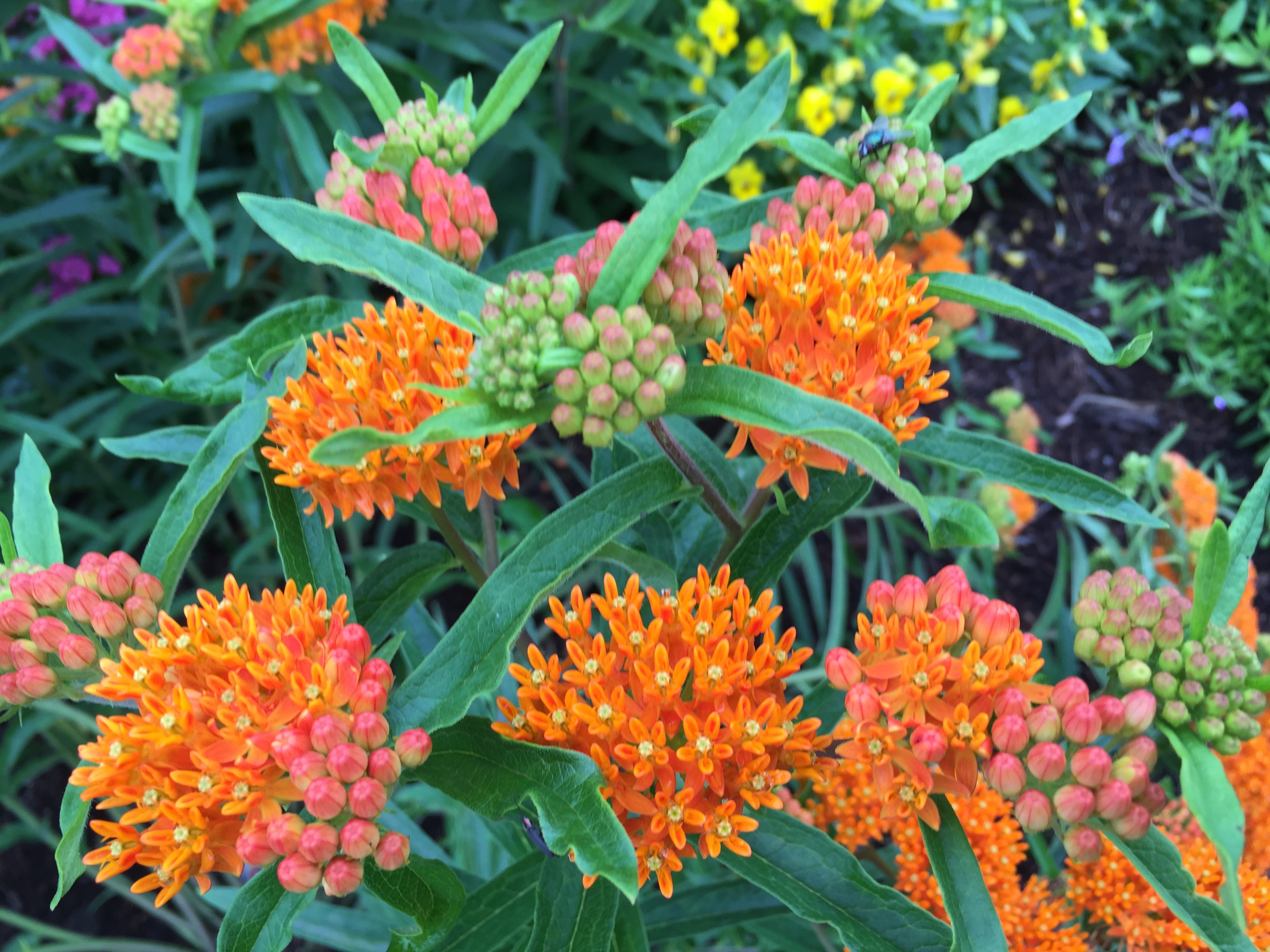Resource Library
Plant of the Week: Asclepias tuberosa; Butterfly milkweed
“If the butterfly weed (Asclepias tuberosa) were a rare exotic perhaps we would build greenhouses in which to grow it, but because it is commonly found along the parched roadsides, we pass it quite unnoticed.” So said Alfred Hottes in 1937 when he described this – in his opinion – overlooked native wildflower in his book on garden perennials. But times have changed. Since gardeners embraced butterflies, the butterfly milkweed has become a hot item.
About 120 species of milkweeds, all native to the Americas, have been described. Long listed as belonging to the milkweed family, new genetic based taxonomy places them in the dogbane family. Butterfly milkweed is native through the eastern states from Canada to the Gulf Coast and west to Arizona and into northern Mexico.
Butterfly milkweed is an herbaceous perennial that grows from a stout, much branched tuberous root. Stems arise from the apex of this root and usually reach two to sometimes three feet tall with a like spread. Stems are usually unbranched with the 2-3-inch-long, linear lanceolate leaves spirally arranged around the hairy stem. Unlike most milkweeds, butterfly milkweed has a thick, clear sap when the stems are broken.
The dense, flattened crown of orange (sometimes almost red) to yellow flowers are produced from late spring through much of the summer at the ends of the shoots. Individual flowers are five petaled which all point backwards and surround a whorl of five erect hooded extensions of the stamens that form a crown. The flowers are attractive to a host of butterfly species but also provide nectar for hummingbirds, bees and other summertime insects.
The distinctive inflated pod is to 4 inches long and stuffed with brown seeds which float away on silky white parasols when the pod splits open in late summer.
Alfred Hottes (1891 – 1955), the man who appreciated the beauty of butterfly milkweed, started as a college professor and eventually made his way to Better Homes and Gardens magazine, which he edited from 1929 -1942. Along the way he wrote a number of solid books about various groups of garden plants and practices. Hottes has always been a favorite, no-nonsense authority about garden plants during the pre-WW II days.
Butterfly milkweed has gained in popularity amongst gardeners interested in attracting monarch butterflies to their flower beds. Milkweeds produce a toxic cardenolide steroidal in their leaves which monarch caterpillars have evolved to tolerate, but birds that feed on them have not. Monarch butterflies only lay eggs on milkweeds, thus assuring their caterpillars will have defense against hungry birds. Unfortunately, butterfly milkweed has a very low cardenolide content and it is not the preferred species for egg laying.
The butterfly house at the Botanical Garden of the Ozarks uses butterfly milkweed in its screened interior, and monarchs lay eggs on it with no problem. It is not uncommon to have the voracious caterpillars strip a plant in a couple days, but there is no bird pressure and the insects go through their complicated life cycle without fear of being eaten.
Butterfly milkweed is best adapted to sandy sites in full sun. It will tolerate heavier soil, but not heavy, wet clay. It is best in a neutral to alkaline pH sites. Once established it is long lived provided the site is not winter-wet. Plants transplant with difficulty so are best grown from fall-collected seeds.
The seeds should be held in dry storage until ready for stratification in mid-winter. The seeds should be soaked overnight in water and then moved to a moist (not wet) media placed in a plastic bag. The bag should be placed in a refrigerator at 40⁰F for 30 days. The seed (or seedlings if they have sprouted) should be planted in a nurse pot for growing out. It often takes an entire growing season before the young plant is sturdy enough to plant in the garden.
For more information about horticulture or to see other Plant of the Week columns, visit Extension’s Website, www.uaex.uada.edu, or contact your county extension agent. The Cooperative Extension Service is part of the U of A Division of Agriculture.
